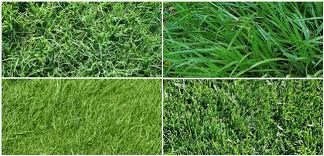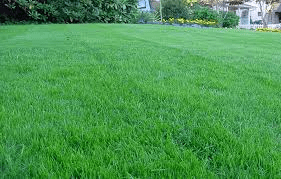Grasses are one of the most common types of plants on Earth. They belong to the family Poaceae and are vital for various ecosystems and human activities. Grasses are found in diverse environments, including lawns, meadows, and savannas.
They play essential roles in soil health, providing food for livestock, and supporting wildlife. Understanding grasses can help us appreciate their importance and manage them effectively for agricultural and landscaping purposes.
Classification of Grasses
Grasses are classified based on various criteria, including their growth habits, morphology, and habitat. Here’s a simplified classification of grasses:
1. Growth Habit: Annual grasses complete their life cycle in one growing season (e.g., corn); perennial grasses live for multiple years (e.g., Bermuda grass); biennial grasses take two years to complete their life cycle (e.g., wild carrot).
2. Morphological Characteristics: Monocots have one seed leaf and narrow leaves with parallel veins (e.g., turf grasses); while dicots are broader with net-like veins, some plants may show these features.
3. Habitat: Wetland grasses thrive in wet conditions (e.g., bulrush); dryland grasses are adapted to arid conditions (e.g., buffalo grass).
Common Types of Grasses

There are numerous grass species, each with unique characteristics and uses. Here are some common types:
1. Kentucky Bluegrass (Poa pratensis): A popular cool-season grass known for its lush green color and fine texture; used for lawns, parks, and sports fields due to its aesthetic appeal and ability to withstand foot traffic.
2. Bermuda Grass (Cynodon dactylon): A warm-season grass with a coarse texture and vigorous growth; widely used in southern regions for lawns, golf courses, and sports fields due to its drought resistance.
3. Fescue Grass (Festuca spp.): Includes tall fescue and fine fescue, known for their adaptability; often used in transitional zones for lawns and pastures because of their tolerance to shade.
4. Ryegrass (Lolium spp.): A fast-growing grass that can be either annual or perennial; frequently used for quick patches in lawns and as a cover crop to improve soil health.
5. Zoysia Grass (Zoysia spp.): A slow-growing warm-season grass with a dense growth habit; ideal for lawns in warm climates due to its tolerance to heat and drought.
Turf Grasses: Characteristics and Uses
Turf grasses are specially selected for their ability to create durable, visually appealing lawns, sports fields, and landscapes. Here are key characteristics and uses of turf grasses:
1. Characteristics: Turf grasses are dense, which helps crowd out weeds and provides a lush appearance; many turf grasses can withstand periods of drought; these grasses can handle foot traffic well, essential for sports fields.
2. Uses: Turf grasses are commonly used in residential and commercial lawns for aesthetic and recreational purposes; they provide a durable surface for sports activities, reducing injury risks for players; turf grasses help prevent soil erosion on slopes and bare areas by stabilizing the soil.
3. Selection Criteria: When selecting turf grasses, consider your local climate (cool-season or warm-season); assess sunlight availability to choose grasses that will thrive; understanding your soil type (sandy, clay, loamy) helps determine the best grasses.
Forage Grasses: Nutritional Value and Importance
Forage grasses are crucial for livestock production, providing essential nutrients for grazing animals. Here’s a closer look at their nutritional value and importance:
1. Nutritional Value: Forage grasses provide protein essential for growth and reproduction in livestock; they are rich in carbohydrates, providing energy for livestock; these grasses supply essential vitamins (like A and E) and minerals (like calcium and phosphorus) necessary for animal health.
2. Importance: Forage grasses are the primary feed source for grazing animals like cattle, sheep, and goats; grazing management of forage grasses contributes to soil health by improving soil structure and nutrient cycling; maintaining diverse forage grass species supports various wildlife species, contributing to ecological balance.
3. Management Practices: Rotational grazing involves rotating livestock between different pasture areas to prevent overgrazing; adding fertilizers can improve grass growth and nutritional value, with soil testing helping to determine appropriate types; keeping pastures free of weeds ensures grasses thrive, providing better nutrition for livestock.
Ornamental Grasses: Aesthetic Appeal in Landscaping
Ornamental grasses are popular in landscaping due to their unique appearance and texture. Here are some key points about their aesthetic appeal:
1. Visual Interest: Ornamental grasses add movement and texture to landscapes with their swaying blades; they come in various colors, from green to purple, enhancing the visual appeal of gardens.
2. Seasonal Beauty: Many ornamental grasses change color throughout the seasons, providing year-round interest; some even produce attractive seed heads, which add beauty in the fall and winter.
3. Versatility in Design: These grasses can be used in borders, as ground covers, or as focal points in garden beds; they complement flowering plants and shrubs, creating vibrant combinations.
Native Grasses: Benefits and Adaptations
Native grasses are indigenous to specific regions and offer numerous benefits. Understanding their adaptations helps in promoting biodiversity and ecological health.
1. Drought Resistance: Native grasses are adapted to local climate conditions, making them more drought-tolerant than non-native species; they require less water and are easier to maintain.
2. Wildlife Habitat: These grasses provide essential habitats for local wildlife, including birds and insects; they support diverse ecosystems by fostering native flora and fauna.
3. Soil Health: Native grasses enhance soil structure and health, preventing erosion; their deep roots improve soil aeration and water retention, benefiting other plants in the area.
Read Also: 5 Amazing Health Benefits of Triphala (Three fruits)
Grass Varieties by Climate Zone

Grass varieties vary according to climate zones, making it essential to choose the right type for your region. Here’s a breakdown:
1. Cool-Season Grasses: These grasses thrive in northern climates and grow best in cooler temperatures (e.g., Kentucky bluegrass, fescue); they are ideal for areas with cold winters and moderate summers.
2. Warm-Season Grasses: These grasses prefer warmer temperatures and grow vigorously in southern climates (e.g., Bermuda grass, zoysia grass); they are suitable for areas with hot summers and mild winters.
3. Transitional Zone Grasses: In regions between cool and warm climates, specific grasses like tall fescue are used; these grasses adapt to a range of conditions, making them versatile for varied climates.
Read Also: How Guava Fruits and Leaves Improve Female Fertility
Grass Maintenance and Care

Proper maintenance is crucial for healthy grass growth. Here are key maintenance practices:
1. Mowing: Regular mowing promotes dense growth and prevents weeds; mowing at the right height (about 2.5 to 4 inches) helps maintain health.
2. Watering: Grass typically needs about 1 to 1.5 inches of water per week; deep watering encourages root growth; it’s best to water early in the morning to reduce evaporation.
3. Fertilizing: Applying fertilizers helps replenish nutrients; using a balanced fertilizer in spring and fall supports healthy growth; soil testing can help determine the right fertilizer type.
4. Aeration: Aerating the lawn helps improve air and water penetration; this process involves creating small holes in the soil to relieve compaction, promoting healthy root development.
The Role of Grasses in Ecosystems
Grasses play vital roles in ecosystems, contributing to environmental balance. Here’s how:
1. Soil Erosion Control: Grasses help stabilize soil with their root systems, preventing erosion from wind and water; they protect soil from being washed away during heavy rains.
2. Carbon Sequestration: Grasses absorb carbon dioxide, helping mitigate climate change; their growth contributes to carbon storage in soil and plant biomass.
3. Habitat for Biodiversity: Grasslands provide habitats for numerous species, including insects, birds, and mammals; they support food chains and contribute to overall biodiversity.
4. Water Filtration: Grass roots help filter pollutants from water, improving water quality; they play a crucial role in maintaining clean waterways and healthy ecosystems.
Grasses play an essential role in our ecosystems and agriculture. Understanding their classification, common types, and specific uses, such as turf and forage grasses, helps us manage these vital plants effectively.
Whether creating a beautiful lawn or supporting livestock, grasses contribute significantly to our environment and economy. By learning about grasses, beginners can engage in better practices for cultivation, management, and appreciation of these remarkable plants.
Do you have any questions, suggestions, or contributions? If so, please feel free to use the comment box below to share your thoughts. We also encourage you to kindly share this information with others who might benefit from it. Since we can’t reach everyone at once, we truly appreciate your help in spreading the word. Thank you so much for your support and for sharing!
Read Also: The Effect of Solid Waste on Business Environments
Frequently Asked Questions
We will update this section soon.

